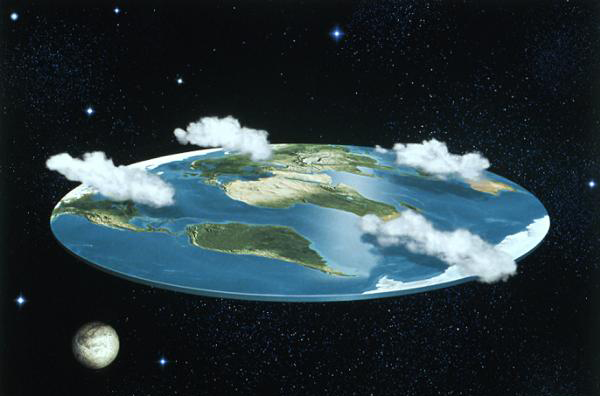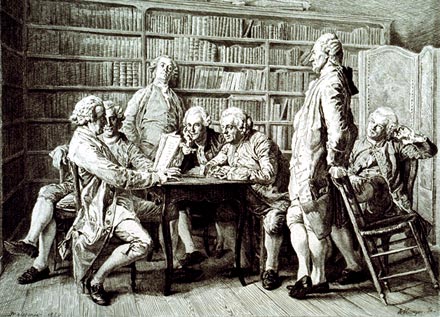Fjordman files the following report with the Tundra Tabloids.
Was Medieval China Superior to Europe in the Sciences?
It has often been stated that the Chinese during the Middle Ages were superior to Europeans in “science and technology.” A problem with this claim is that science and technology were traditionally completely separate disciplines. They only started merging after the Scientific Revolution, and then only in the Western world. East Asians did well in applied technology with a limited theoretical basis, yes, but they were not equally good in the physical sciences.
When the pro-Chinese English scholar Joseph Needham investigated the history of science among the Chinese he was eventually forced to conclude that “one can hardly speak of a developed science of physics” in China prior to modern contact with Europeans. It lacked the systematic thinkers that one encounters in the history of mechanics in medievalEurope, where there was an established tradition of arguing with Aristotle’s conceptions of motion. These include names such as Philoponus, Buridan, Bradwardine and Oresme, who all contributed to developments that culminated in Galileo’s work. In China there was no Galileo, nor Kepler’s laws of celestial motions, which formed the basis for Newton’s great synthesis.
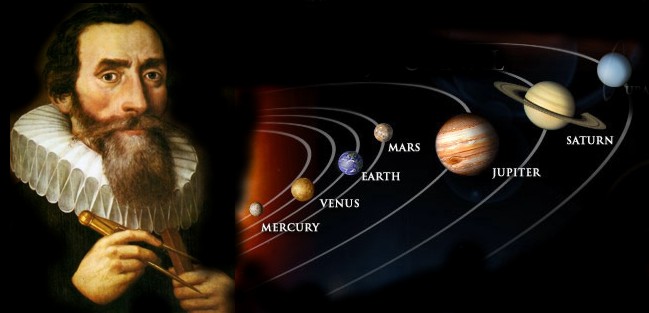
The great Temple of Heavenwas constructed in fifteenth century Beijing. Symptomatically, the Earth was represented by a flat square and Heaven by a circle, which accurately reflects the fact that the Earth was widely held to be flat in Chinese cosmology well into modern times. By contrast, it was common in medieval Europe to see a cross-bearing orb on royal regalia, symbolizing Christ’s dominion over the world. One striking aspect of this is that the Earth was here represented as a spherical object. This was for instance the case with the Orb, Scepter and Crown insignia of the Holy Roman Empire, possibly dating back to the tenth century AD.
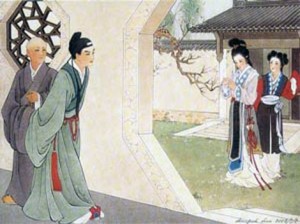 At this time, Europe was barely recovering from the collapse of urban civilization, while China, with the world’s largest and most sophisticated economy, went from the Tang to the Song Dynasty and was in the middle of one of the most technologically creative phases in its history. Another way of saying this is that Europeans had a more scientifically correct understanding of the shape and size of the Earth in a period when urban civilization barely existed there than the Chinese had while performing at their very best.
At this time, Europe was barely recovering from the collapse of urban civilization, while China, with the world’s largest and most sophisticated economy, went from the Tang to the Song Dynasty and was in the middle of one of the most technologically creative phases in its history. Another way of saying this is that Europeans had a more scientifically correct understanding of the shape and size of the Earth in a period when urban civilization barely existed there than the Chinese had while performing at their very best.
The consensus among Chinese scholars until around 1600 AD, more than two thousand years after Greek thinkers had demonstrated that the Earth is spherical, was that the Earth is flat. This basic error wasn’t corrected until they encountered modern European astronomers.
People of European origins are constantly accused of harboring prejudice against members of other cultures, but the more I read of European history, the more I realize that some of the worst prejudice actually targets our own ancestors. Many Westerners too readily believe that medieval Europeans were primitive simpletons who thought that the Earth was flat while the Chinese were scientifically sophisticated. As we have just seen, reality is just the opposite.
Likewise, whereas most nations are rather reluctant to acknowledge borrowings from other cultures, Europeans sometimes inflate their debt to others. For example, many automatically assume that their ancestors got the magnetic compass from China, but the early history of this device is not settled. There are those who think that the compass was invented independently in Europe. What we can say with certainty is that after it had come into being only one civilization – the European one – showed any substantial interest in the physics behind it.
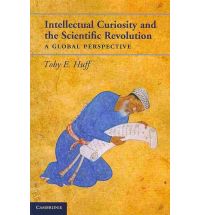 As Toby E. Huff says in his 2010 book Intellectual Curiosity and the Scientific Revolution, the first systematic treatise written on magnetism in Europe – and most likely anywhere – was that of the French scholar Peter Peregrinus, or Pierre de Maricourt. He had studied at the University of Paris and was praised by Roger Bacon for his experimental methodology.
As Toby E. Huff says in his 2010 book Intellectual Curiosity and the Scientific Revolution, the first systematic treatise written on magnetism in Europe – and most likely anywhere – was that of the French scholar Peter Peregrinus, or Pierre de Maricourt. He had studied at the University of Paris and was praised by Roger Bacon for his experimental methodology.
The Chinese polymath Shen Kuo (1031-1095) mentioned a compass in 1088. It is frequently claimed that Europeans imported the compass from China, but this device was known to the English scholar and theologian Alexander Neckam (1157-1217). Unlike the military use of gunpowder, which spread across Eurasia with the Mongol conquests in the 1200s, nobody has yet established a plausible chain of transmission for the compass from East Asia to Europe before this date. It was apparently unknown in the Middle East at the time. All things considered, there is a real possibility that the compass was independently invented in Europe.
It is worth noting here that even though the Chinese utilized magnetism skillfully for navigation they never worked out the underlying scientific principles behind it, nor apparently spent much effort trying to do so. This confirms to the picture that the Chinese were primarily interested in technology that was immediately useful, but were comparatively weak in physics and the theoretical sciences. Already in medieval times, centuries before the Scientific Revolution, the insatiable European curiosity had been applied to the nature of magnetism:
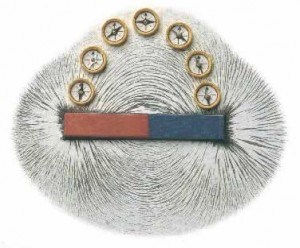 “Neckham described magnetic forces (ca. 1190) and refers to European mariners using the compass at that time but does not indicate that it was something new. In any event, Peregrinus’s letter is a systematic treatise on the magnet that attempts to explain magnetic attraction. It also includes the invention of the compass-card and the dry-pivot compass not known in China until the arrival of Europeans in the sixteenth century.”
“Neckham described magnetic forces (ca. 1190) and refers to European mariners using the compass at that time but does not indicate that it was something new. In any event, Peregrinus’s letter is a systematic treatise on the magnet that attempts to explain magnetic attraction. It also includes the invention of the compass-card and the dry-pivot compass not known in China until the arrival of Europeans in the sixteenth century.”
Although he was able to demonstrate that magnets have complementary poles, Peregrinus didn’t make the leap to the idea that the Earth, too, is like a lodestone with two poles. This was done by William Gilbert, who showed that the Earth is a giant magnet. He stated that the reason for the compass needle pointing north is not due to the attraction of the Pole Star or a large magnetic mountain in the far north but because of the magnetic force of the Earth itself.
The existence of “electricity” as a term and phenomenon was introduced by the English naturalist William Gilbert (1544-1603) with his landmark book on magnetism, De Magnete, in 1600. “It is from this word, electrics, that we get our word electricity. With that insight, Gilbert created the completely new field of electric studies.” He introduced the electroscope, which may have been the first instrument for detecting an electric charge. His experimental methods were admired by Galileo, and his ideas about the Earth being a giant magnet fired the imagination of Kepler, who speculated on the astronomical relevance of magnetic forces.
Amber (elektron in Greek) has been traded since the Stone Age in Europe, and it was known that when rubbed with fur it could attract light objects such as feathers. William Gilbert, after experimenting, concluded that a few other materials have the same capacity. The subatomic particle carrying negative electric charge was identified in 1897. The name electron for this particle was suggested by the Anglo-Irish physicist George Johnstone Stoney (1826-1911).
The intellectual capital accumulated like gold throughout the Scientific Revolution and the Enlightenment. These discoveries eventually had momentous implications for all humanity. Between 1600 and 1799 there were at least a couple of hundred significant European investigators of electrical phenomena. The 200-odd pioneers whose works have been studied “serve as a sure indicator of the spirit of curiosity that animated this field across Europe.”
The English natural philosopher Francis Hauksbee made an electrostatic generator in 1706, but he was ahead of his time. Stephen Gray (1666-1736) in 1729 showed that electricity can flow and that conductors must be insulated. He demonstrated that the electrical attracting power could be transmitted over great distances, provided that the conducting line is made of a suitable material. In 1733 the French naturalist Charles du Fay (1698-1739) demonstrated that there are two kinds of electric charge, consequently dubbed “positive” and “negative,” with like charges repelling one another and opposite charges attracting one another.
Benjamin Franklin developed the idea that lightning is a form of electrical discharge and concluded that erecting pointed conductors – lightning rods – could protect buildings from lightning strikes. This was hailed as a triumph of reason over nature, a true Enlightenment ideal.His ideas were developed into a more mathematically consistent theory of electricity and magnetism in 1759 by the German natural philosopher Franz Aepinus (1724-1802), whose theories were taken up by Volta, Coulomb and Cavendish. Charles de Coulomb (1736-1806) of France discovered that the force between two electrical charges is proportional to the product of the charges and inversely proportional to the square of the distance between them.
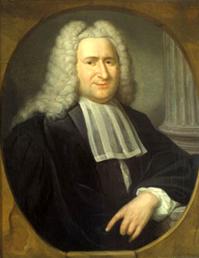 The Dutchman Pieter van Musschenbroek (1692-1761) and the German Ewald Georg von Kleist (1700-1748) independently invented the first capacitor in the 1740s, a device for storing static electricity known as the Leyden jar. It created a craze in the late 1700s for electrical party tricks as well as for more serious scientific studies of electrical phenomena.
The Dutchman Pieter van Musschenbroek (1692-1761) and the German Ewald Georg von Kleist (1700-1748) independently invented the first capacitor in the 1740s, a device for storing static electricity known as the Leyden jar. It created a craze in the late 1700s for electrical party tricks as well as for more serious scientific studies of electrical phenomena.
The lightning rod was arguably the only practical electrical invention from the eighteenth century that was of lasting significance; the Leyden jar and similar devices were used more for party tricks at the time, although they did contribute to continued interest in the field.
It is by no means self-evident that European scholars would continue their studies of the properties of electricity for a couple of hundred years before finally achieving substantial practical results from their efforts. The rest of the planet showed little interest in the subject.
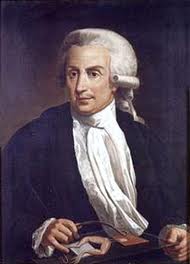 The naturalist Luigi Galvani (1737-1798) studied medicine at the University of Bologna and attended courses in chemistry. After 1780 he investigated electricity. By exciting with static electricity the spinal medulla of freshly killed frogs and seeing their legs jump, he realized that frogs could be detectors of electricity. With the publication of his treatise On the Forces of Electricity in Muscular Motion (1791), “animal electricity” started attracting attention.
The naturalist Luigi Galvani (1737-1798) studied medicine at the University of Bologna and attended courses in chemistry. After 1780 he investigated electricity. By exciting with static electricity the spinal medulla of freshly killed frogs and seeing their legs jump, he realized that frogs could be detectors of electricity. With the publication of his treatise On the Forces of Electricity in Muscular Motion (1791), “animal electricity” started attracting attention.
Another Italian, Alessandro Volta (1745-1827), managed to do without frogs and by 1800 had built a mostly metallic device – the earliest undisputed electric battery – that provided a steady flow of electricity for the first time. This caused a sensation throughout Europe.
It has been speculated whether other cultures had previously invented similar devices, but evidence of this, as in the case of the so-called “Baghdad battery,” is disputed at best. If other tools for producing a steady electric current ever existed, they didn’t lead to lasting changes and their use was eventually discontinued. Volta’s invention changed the entire world forever. It spawned a cluster of innovations related to electric equipment and electromagnetic means of communication, starting in the nineteenth century with the telegraph and the telephone and continuing with radio, television and finally the Internet. All electrical devices in use globally today stem from the unique European tradition of scientific curiosity, directly or indirectly.



